- € 0.00 0 items
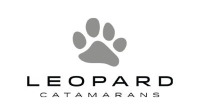
Leopard Catamarans were born from the charter market: Robertson & Cain was briefed to design and build specially designed yachts for The Moorings: a global charter company.
6 years later, the company branched out into developing catamarans for Private use, and in 2000 the Leopard brand was born.
Lex Raas jumped ship from the Beneteau and became operational director accelerating the growth of the company.
The History of Leopard Catamarans: a Timeline
- 1997 – Leopard 45
- 1998 – Leopard 38
- 2000 – Leopard 47
- 2001 – Leopard 42
- 2003 – Leopard 62
- 2004 – Leopard 40, 43
- 2006 Leopard 46
- 2009 Leopard 38
- 2010 Leopard 39, 44
- 2012 Leopard 48, 58
- 2014 Leopard 40
- 2016 Leopard 45
- 2018 Leopard 50
- 2020 Leopard 42
1997 Leopard 45
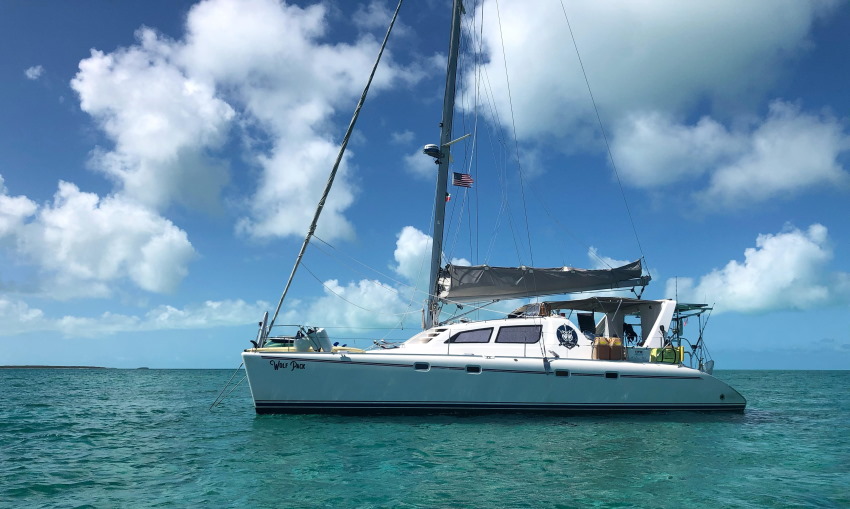
The first Leopard Catamaran model was the first 45. Shown here is “Wolf Pack”. The earlier designs have a lower bridgedeck than the later boats. This is a strong, sturdy boat, but it is susceptible to slamming going upwind in waves.
1998 Leopard 38
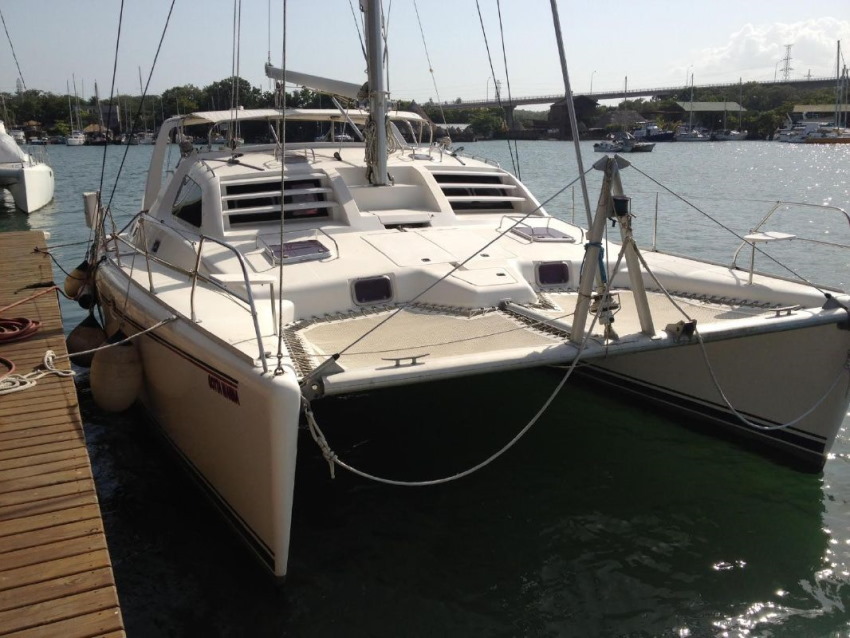
An example includes “Ant Legs”. The 38 was redesigned by Morelli and Melvin in 2009. The first 38 was the second model out of the south African yard. This blog gives a great summary of the boat: SV Rover .
Leopard 47 2000

Basically a 45 with lengthened sterns. The extra length allows the 47 to soak up more as cruising weight is added. Very seaworthy, strong boat although you will experience more slap with that lower bridgedeck.
2001 Leopard 42 (Moorings 4200)
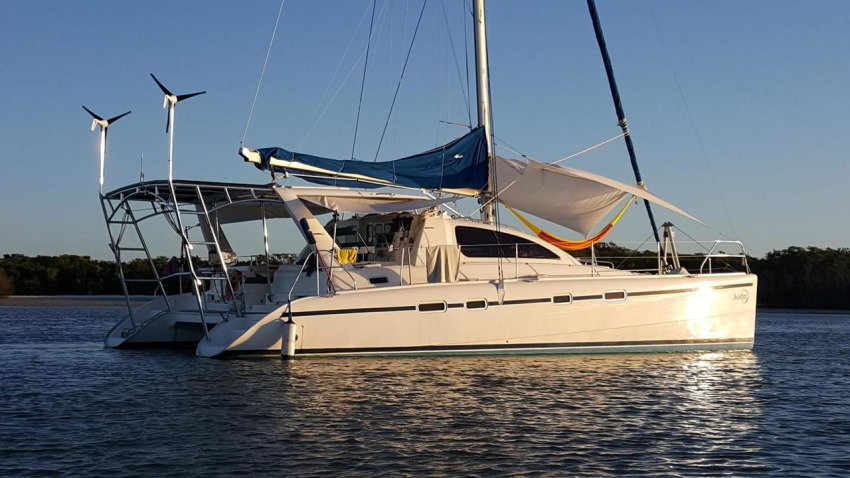
Designed by South Africans Simonis-Voogd who are the architects behind Kinetic Catamarans . They continued along the same sleeker lines for this tough cruising boat. The mainsheet traveller is overhead on the trademark wing arch at the aft end of the cockpit.
Leopard 62 2003 (Moorings 6200)
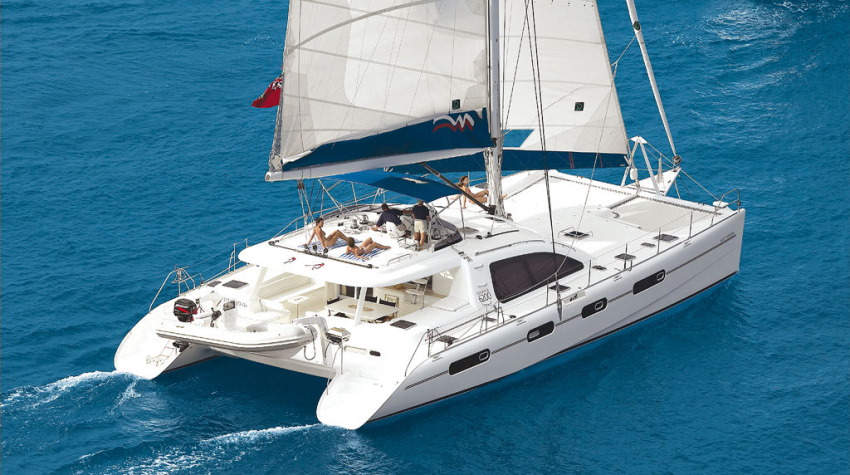
The 62 was pitched against the up and coming Sunreefs – large luxury yachts with flybridges which were starting to become popular at the time. This 60 footer has plenty of living space.
Leopard 40 (2004)
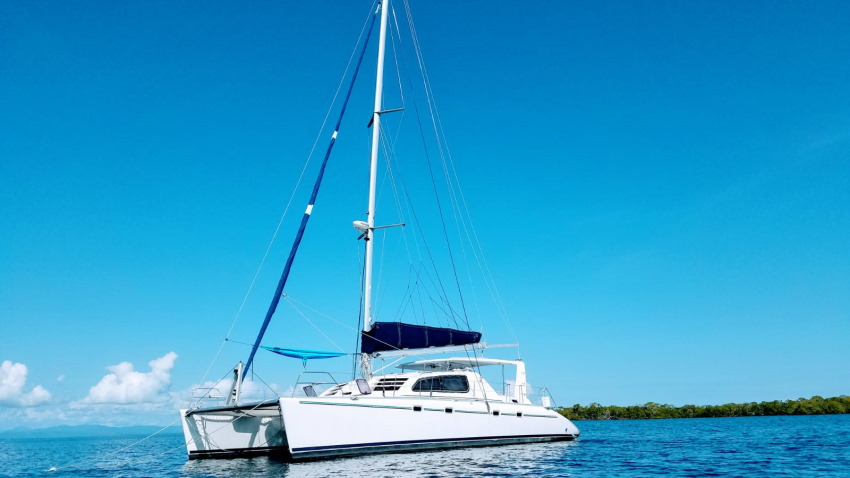
Designed by Morrelli and Melvin, the 40 remains one of the most popular leopard Catamarans on the second hand market. The hulls have chines to increase the living space while maintaining a good speed through the water. This catamaran had a hard top bimini as standard.
Leopard 42 2004 (Moorings 4200), Leopard 43
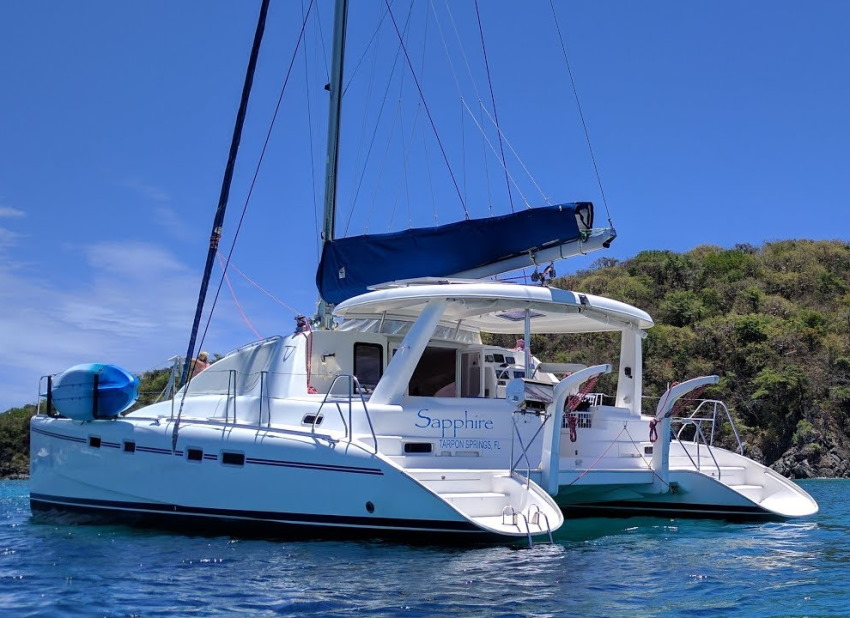
A comfortable and decent passage maker that can be sailed short-handed. The bridgedeck is low, so some reports of slamming going into the weather.
The 43 is an evolution of the Leopard 42, built by Robertson and Caine. If you watch sailing channels on Youtube, you may have come across this yacht on the “ Gone with the Wynns ” channel. They had a 2005 Leopard 43 which they sold in 2022.
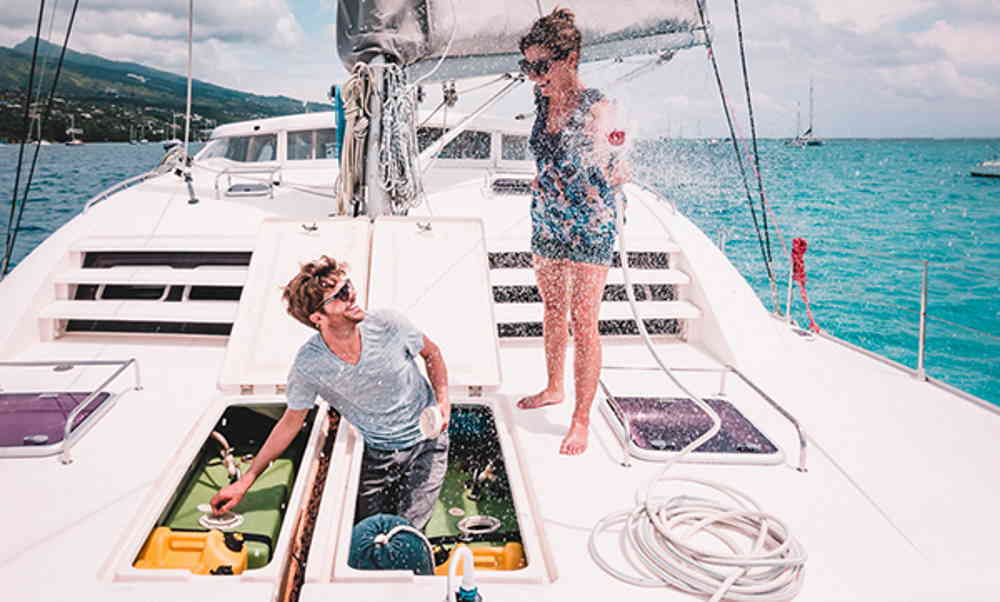
The next boat? An HH Catamaran . I guess the sailing channel is going well! Built from 2004 to 2007. 74 Units built.
Leopard 46 2006
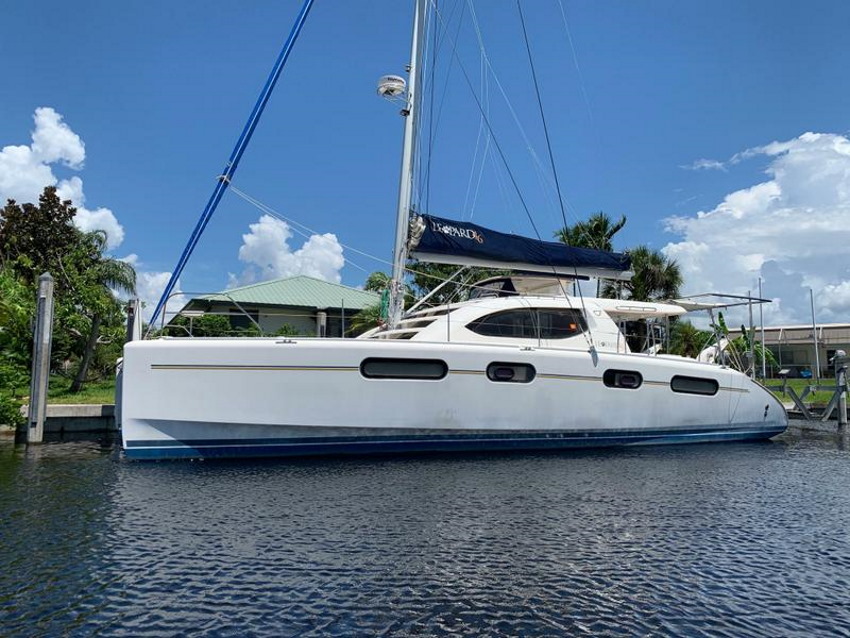
Designed by Morrelli and Melvin with the familiar cat like eyes when seen from the side. The hulls are narrow at the waterline- then flare to a chine above the water to maximise living space (an old Catana trick).
Built with vacuum-bagged E-glass over balsa core.
Leopard 38 (2009)
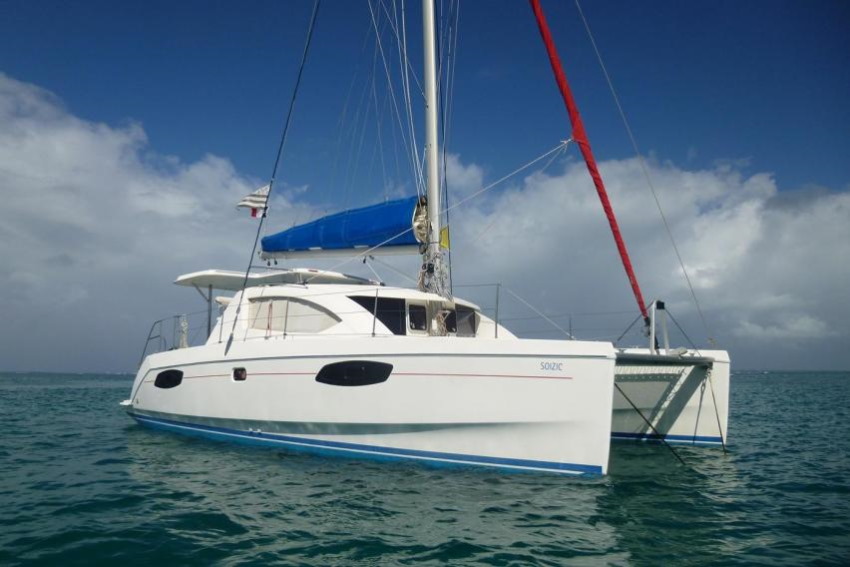
Morrelli and Melvin next turned their design pens to the 38, available in 3 or 4 cabin layout. The designers continued with their mission of increasing the bridgedeck clearance on the 38, reducing the wave slap issues of earlier models. Also known as the Sunsail 384. This isn’t the prettiest design, in my opinion, but is a very capable boat.
Leopard 39 2010
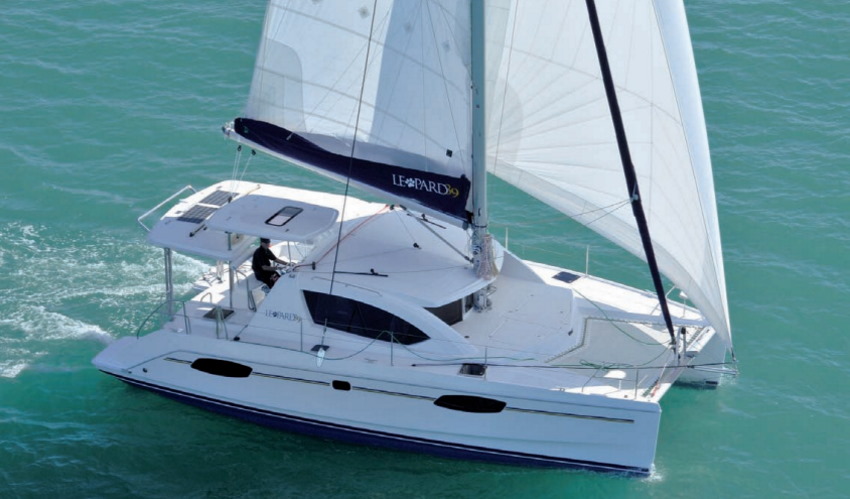
Easily recognisable as a Morrelli and Melvin design, the Leopard 39 was an evolution of the Leopard 38 with a single level bimini over the cockpit, and a hard top over the helm. The 39 was in production until 2014.
Leopard 44 2010 (Sunsail 444)
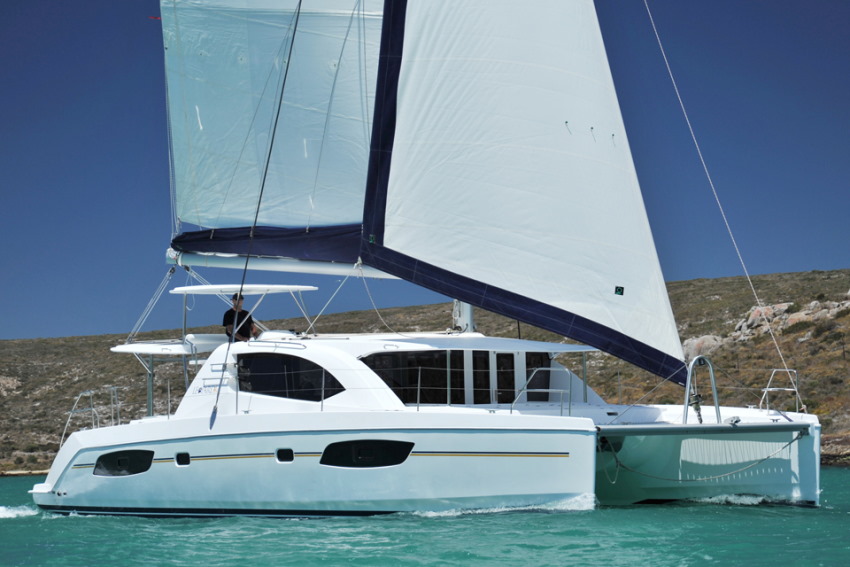
The overhanging roof over the new forward cockpit is not to everyone’s taste, but it is a popular feature with owners.
Once again designed by Gino Morrelli and Pete Melvin, this boat is famous for introducing the forward cockpit to the cruising catamaran market. Perhaps it was their Gunboat designs that inspired them?
Let’s just say that Leopard haven’t looked back since they introduced this new space forward. It’s very popular with charter customers and private owners alike.
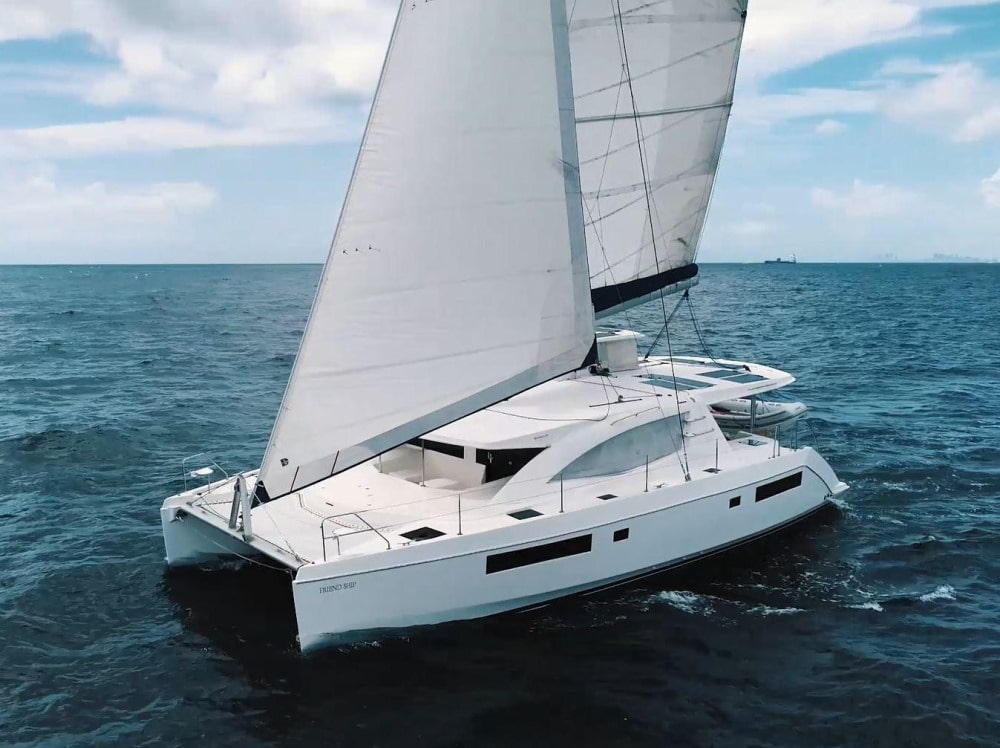
Development on the exterior styling, forward cockpit, and interior, the 45 is more angular than her predecessor and prettier than the 40.
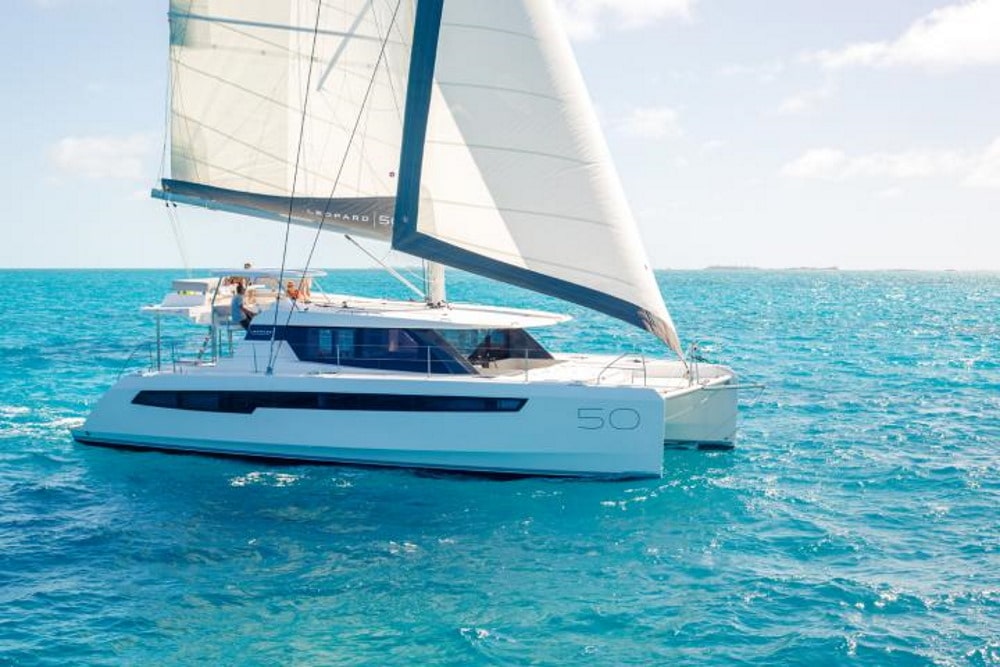
A complete upgrade from the 48, the Leopard 50 manages to look pretty sleek despite that forward cockpit overhang. A seaworthy boat with a huge amount of living space that performs well when the wind is up.
Read our Full Leopard 50 Review
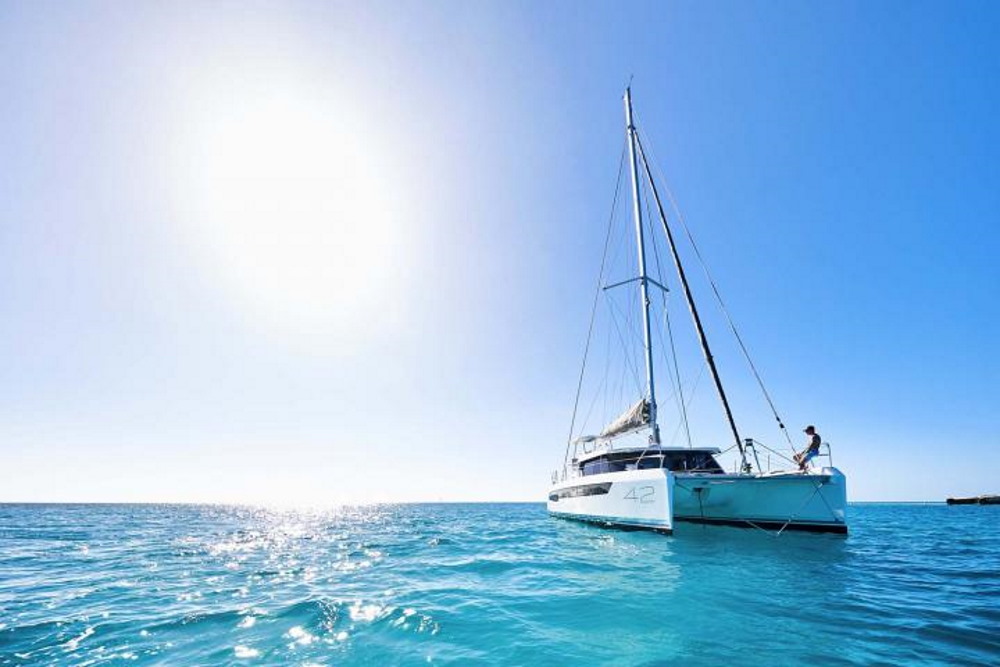
Like the 50, the 42 manages to look sleek, even with her boxy design and the forward cockpit overhang. Designed by Simonis Voogd. Construction is foam-cored vacuum infusion covered with a single nacelle mould. SA/D is 22, D/L is 179.
Read our Leopard 42 Review
if you enjoyed that summary of Leopard, take a look at some of our other catamaran histories:
Balance Catana Dazcat Fountaine Pajot Gunboat HH Kinetic Lagoon Marsaudon Nautitech Outremer Prout Sunreef
Showing all 3 results
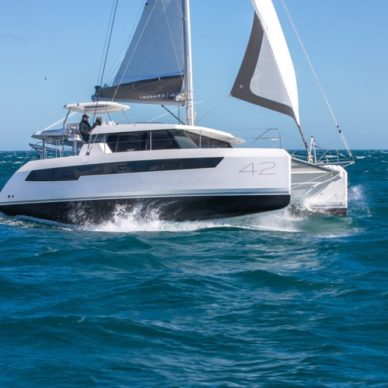

Leopard 48 For Sale
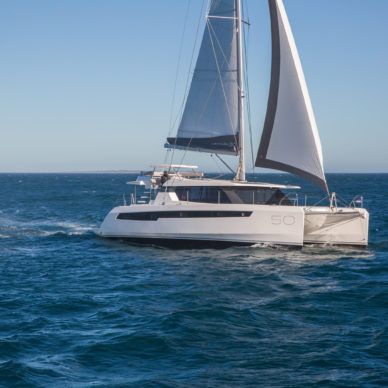
- Xquisite Yacht News
- Lagoon Sea Trials
- Excess 11 Special Offer June, July 2024
- How Do You Break the World Speed Sailing Record? SP80 Team.
- Lagoon Teams Up with Uvoji for Purified Water
- Excess Catamarans Starlink Offer May 24
- Cure 55 Catamaran Build Update
- Webcam – Club Marítimo Castelldefels
- Lagoon World Escapade 2024
- First Vaan Yacht in “Vivid Alu”
Browse, search and find your perfect catamaran!
Privacy Overview
- Custom Cats
- Performance Cats
- Cruising Cats
- Luxury Cats
- Owner Reviews
- YT Channels
- BOAT OF THE YEAR
- Newsletters
- Sailboat Reviews
- Boating Safety
- Sails and Rigging
- Maintenance
- Sailing Totem
- Sailor & Galley
- Living Aboard
- Destinations
- Gear & Electronics
- Charter Resources

Leopard 42 Boat Review
- By Herb McCormick
- Updated: July 23, 2021
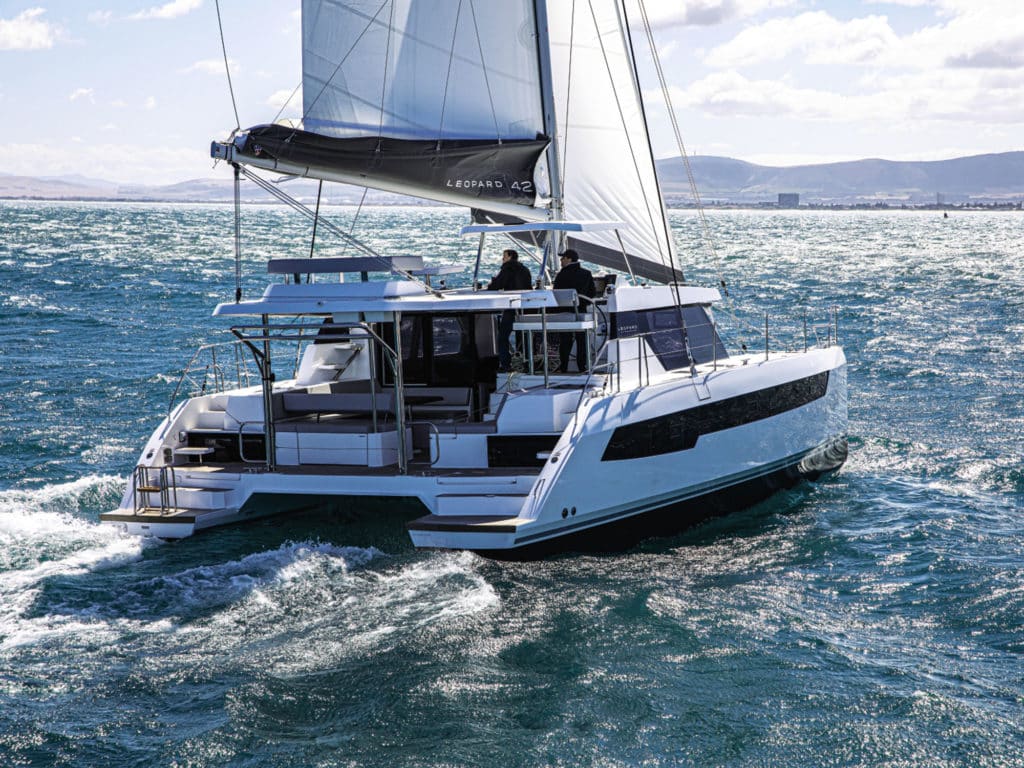
Mick Jagger was not singing about boat tests and wind speeds when he belted out the title lyrics to the classic Rolling Stones tune “You Can’t Always Get What You Want.” Far too often during many years of conducting sea trials on new boats—when you’re locked into a tight, non negotiable schedule for getting on the water—I’ve shown up just in time for a languid spell of very light air or, even worse, zippo breeze whatsoever. Definitely not what you want.
But there are also those lucky afternoons when you get what’s required for a sweet sail. Which pretty much describes the conditions this past spring when I rolled into a marina near Fort Lauderdale, Florida, for a test run aboard the new Leopard 42 catamaran , and was greeted by windswept palm trees and a stiff 20- to 25-knot easterly whipping up whitecaps on the deep blue Atlantic.
What’s the line, “When you try sometimes…you get what you need”? Exactly. And in this instance, then some.
Generally speaking, cruising cats are different than their spindly racing siblings: more tankage, more machinery, more furniture, more stuff. Which means they don’t maximize sailing performance in lighter conditions (nor are they attempting to…that’s why they’re cruising boats). But give a well-designed, well-built cat with liveaboard capabilities some legitimate air pressure to play with, and the results can be eye-popping. (Or not, frankly. Lots of wind can be too much for some lesser vessels.) Which was most certainly the case with the latest Leopard under sail in the double-digit gusts. Where she thrived.
Naval architect Alex Simonis—based near the wild, windy waters off Cape Town, South Africa—is the longtime designer of Leopard cats, and a man who relishes drafting solid boats that sail and perform exceedingly well (for proof, have another look at this month’s cover shot of a Leopard 42 hauling the mail in the shadow of iconic Table Mountain). His willing partners in this crime of nautical passion are the artisans at Robertson & Caine, the boatyard that in 2022 will build approximately 120 to 130 sailing cats ranging in size from 42 to 50 feet. It’s true that the company could probably expand production based on the current and ongoing demand for Leopards, but that would run counter to the builder’s very ethos: Quality is the aim here, not quantity.
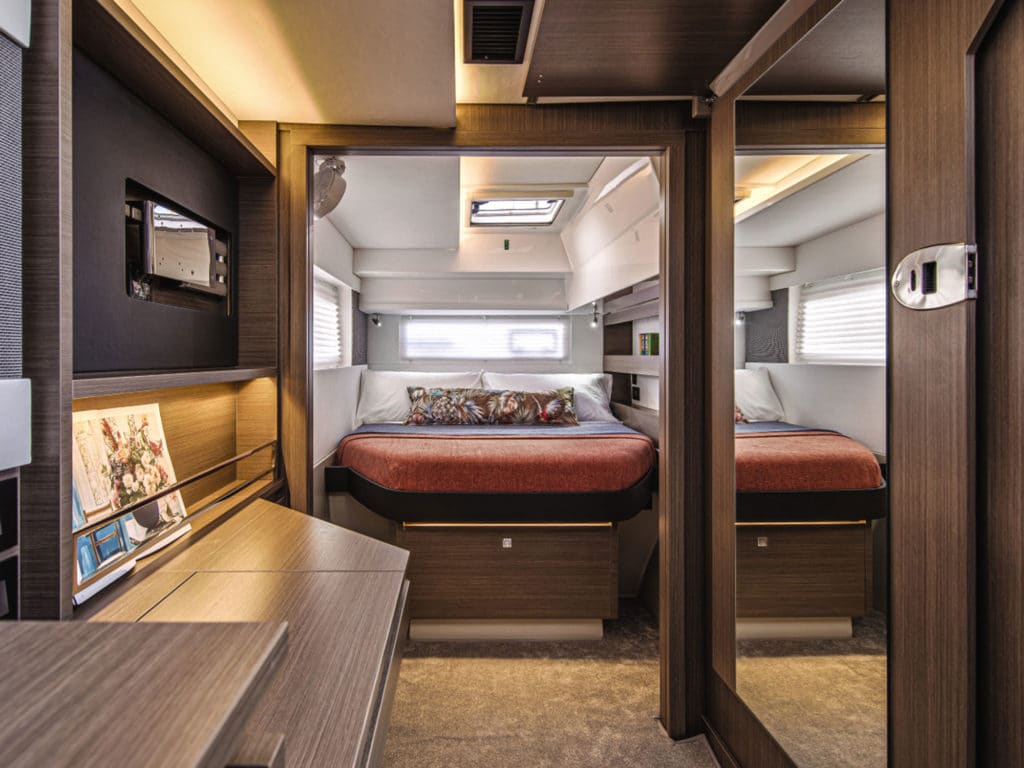
As we motored out of the inlets and into the open sea for the trials, I’ll admit that I was so relishing the sail that it never occurred to me to jot down the relevant statistics—speed, high and low RPM, etc.—for the twin 45 hp Yanmar diesels. My bad. Let’s just say we got out there smoothly and quickly.
Leopard was conducting a mini boat show at its docks in Dania Beach that upcoming weekend, so there was an all-star crew of sailmakers and company reps aboard, including Franck Bauguil, an executive at travel conglomerate Travelopia, whose brands include the privately owned Leopards, and chartering giants Sunsail and the Moorings, and whose duties include product development—a fancy title that actually means he spends a lot of time hanging with Simonis while sailing around and dreaming up cool boats. As we powered into the chop, I mentioned something about a reef, and Bauguil gave me a sidelong look of disappointment, like a resigned parent inspecting a horrible report card. Full hoist it was. As the full-battened, deeply roached, square-topped mainsail was raised, I had a brief thought about singer/songwriter Cat Power, for it was abundantly clear what was powering this darn cat.
It’s interesting to note the difference between the Leopard’s sail plan and, say, the current approach from one of the big French production-cat builders like Lagoon. In recent years, Lagoon, as a brand, has made a conscious decision to slide the entire rig aft, depending more on an expansive foretriangle for drive and grunt, and taming the entire arrangement with a self-tacking headsail. With the Leopards, including the 42, the rig remains comparably forward, and it’s the mainsail, with a relatively longer boom than a Lagoon, that supplies the muscle (we’re talking basically a low-aspect main and rig on a Leopard versus a high-aspect one on the Lagoon), aided and abetted by an overlapping 110 percent headsail that’s tacked like a traditional sailboat. I honestly can’t say if there’s a right or wrong answer here, but it’s fascinating to recognize and compare the differing philosophies.
Back in the real world, I’d ascended the four steps to the starboard helm station, which is where you’ll find the wheel on every Leopard; in such matters, these guys are unabashed creatures of habit. The surrounding view was expansive but, more pertinently, within arm’s length I had everything—and I mean everything —required to sail and command the boat: a trio of electric winches (two of which are standard), mainsheet and jib sheets and rope clutches, a nifty traveler setup, dual engine controls, chart plotter and related sailing instruments, and so on. For the most part, across the board, catamaran designers these days lay out decks with the notion and objective that it takes only one sharp sailor to run the whole bloody show, and the Leopard 42 certainly perfects that concept.
After motoring off the coast for sea room, we hardened up to a close reach, and matters became extremely interesting, not to mention noisy and blowy. Which was great. The cat trucked along at a solid 8.5 knots, but what struck me the most was how solid and steadfast she felt as she cleaved through the chop; the sensation of the twin hulls of a fine cat in exquisite balance really does feel like a freight train on its rails.
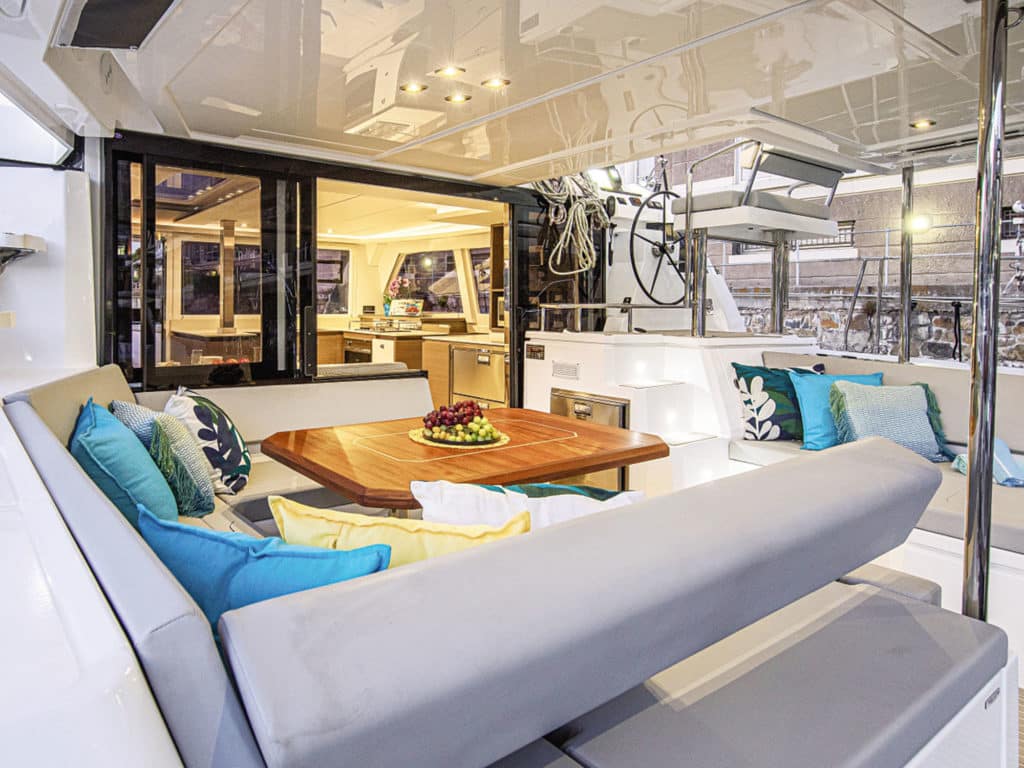
But the real fun happens when you crack off and free up the wind angle, and the Leopard leaped at the course change and eased sheets, flirting with 10 knots on a screaming reach. We did have a bit of a fire drill when a blast of wind caught the corner of the furled code zero—which then, of course, started to totally unfurl—and I got my day’s cardio helping drop and corral the beast on the trampolines. Extremely good times.
Back at the dock, all systems once again calm and shipshape, I had a chance to wander the decks and interior. The look and feel of the features and accoutrements are totally modern, as in ultra-contemporary (more than once in my notebook the word “angular” appears). The profile is enhanced by tinted, continuous side windows in the hull, and the coach roof segues into the hard Bimini that’s carried aft and canopies the cockpit. Up top—on the penthouse, so to speak—there’s an inviting lounge space. There’s a marvelous afterdeck and swim platform, features for which I have an extremely soft spot. The cockpit has a fine-dining area to port, opposite the helm.
The galley is forward in the roomy central cabin, with the dining table aft to port. The 42 doesn’t have the forward cockpit employed on larger models, but there is a watertight front doovate owner’s cabin to starboard (with desk, vanity, flat-screen TV, huge head, etc.) and a pair of staterooms to port, but you can spec out the interior in multiple ways: tr that leads to a pair of sun lounges, the tramps, and an optional fixed bowsprit if you’re going with the performance package that includes the code zero. Our test boat had the pretty awesome private owner’s cabin to starboard (with desk, vanity, flat-screen TV, huge head, etc.) and a pair of staterooms to port, but you can spec out the interior in multiple ways: three or four cabins, three or four heads, six or eight berths, three or four showers. The four-cabin, four-head configuration is likely what you’ll find if you charter one; about half the production run is bound for the bareboat fleets.
The Leopard 42 replaces the Leopard 40 in the brand’s quiver, and is certainly a more substantial ride in every notable way. The only problem, really, is that as the world emerges from these pandemic times, they’re going fast. The 42 might be quick, but if you want one, you need to be even quicker.
Specifications Leopard 42
| LENGTH OVERALL | 41’7″ (12.67 m) |
|---|---|
| WATERLINE LENGTH | 40’10” (12.4 m) |
| BEAM | 23’1″ (7.04 m) |
| DRAFT | 4’7″ (1.4 m) |
| BRIDGEDECK CLEARANCE | 2’6″ (0.75 m) |
| SAIL AREA (STANDARD) | 1,217 sq. ft. (113 sq. m) |
| DISPLACEMENT (Light ship) | 27,485 lb. (12,467 kg.) |
| DISPLACEMENT/LENGTH | 179 |
| SAIL AREA/DISPLACEMENT | 21.4 |
| WATER | 174 gal. (660 L) |
| FUEL | 158 gal. (600 L) |
| MAST HEIGHT | 67’10” (20.7 m) |
| ENGINE SPECIFICATIONS | Twin 45 hp Yanmars with saildrives |
| DESIGNER | Simonis & Voogd |
| PRICE (fully equipped and delivered) | $689,000 |
| Wind speed | 20 to 24 knots |
|---|---|
| Sea state | Choppy |
| Sailing | Closehauled 8.5 knots/ Reaching 9.8 knots |
| Motoring | Cruise: N/A/ Fast: N/A |
Herb McCormick is CW ’s executive editor.
- More: Boat Reviews , catamaran , leopard , multihull , multihulls , print June 2021 , Sailboat Reviews , Sailboats
- More Sailboats

For Sale: 2015 Dufour 500 GL

New Sailboat Brand: Mishi Yachts

For Sale: 2005 Tayana 48

For Sale: 2015 Catalina 355

Pro-Grade Sailing Eyewear

Le Boat and Groupe Beneteau Ink Deal
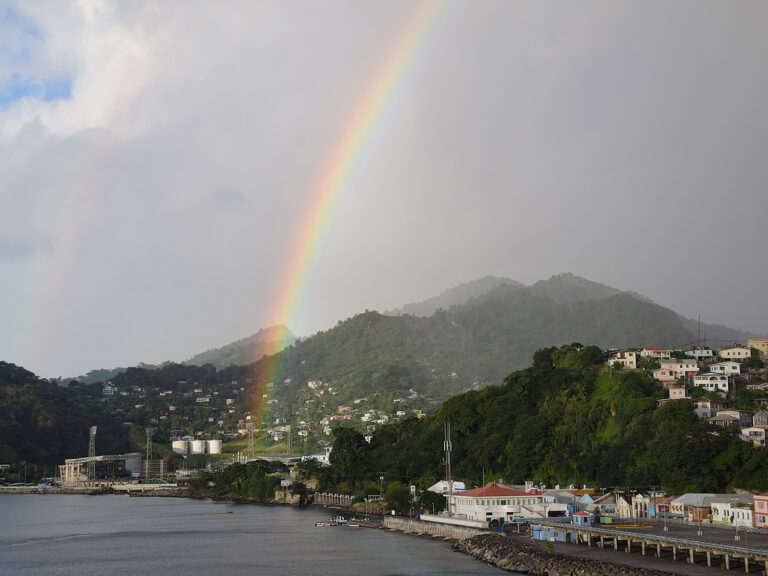
Hurricane Beryl Relief Efforts: How You Can Help
- Digital Edition
- Customer Service
- Privacy Policy
- Email Newsletters
- Cruising World
- Sailing World
- Salt Water Sportsman
- Sport Fishing
- Wakeboarding

Are Leopard Catamarans Still Worth The High Price?
South African boat builders Robertson and Caine worked with international naval architects Morrelli, Melvin, and Simonis Voogd to design their Leopard Catamaran range.
These catamarans are known to be spacious, comfortable, and performance-driven bluewater cruising catamarans. In addition, Leopard catamarans are the only catamaran brand certified in Europe (CE certification) and the US (NMMA Certified).
These South African-built boats have a reputation for being robust enough for ocean crossings, extremely spacious, easy to handle, and expensive.
Here’s Why Leopard Catamarans Are Worth Their High Price:
Leopard Catamarans are worth their high price because they are extremely well-built with high-quality finishes. Initially designed for the charter market, they became so popular that the company expanded into the private market offering a choice of layouts and semi-custom options.
Table of Contents

A Brief History Of Leopard Catamarans:
In 1991, John Robertson and Jerry Caine started a boat building company in Woodstock, a suburb of Cape Town, South Africa. The company earned a solid reputation for building custom racing yachts and production cruisers.
By 1994, as the company became known, Robertson and Caine were approached by the leading global yacht charter company, The Moorings, to produce specifically designed, spacious catamarans for its charter fleet.
The company successfully delivered 100 new catamarans to The Moorings in less than 4 years!
Plus, they sailed every catamaran from Cape Town to various charter destinations worldwide, proving their robust design and blue water capabilities.
Six years later, Robertson and Caine started to manufacture catamarans for the private market, and in 2020 the brand Leopard Catamarans was introduced. Sailors worldwide were impressed with this new line of catamarans. The custom ‘owner’ versions became very popular for private use, with owners able to choose their layout, plus any optional equipment and even their delivery location.
In 2007, Leopard Catamarans tested the luxury power catamaran market by introducing the Leopard 47 power catamaran. The Leopard 47 power cat was a great success with its stylish, good looks and remarkable fuel efficiency.
Today Leopard Catamarans offers a range of both sailing and power catamarans from 40 to 53 feet, and the company has delivered more than 2,500 Leopard Catamarans worldwide. They have become one of the industry’s leaders in producing and delivering quality catamarans for private use and charter fleets worldwide.
Catamaran Or Monohull? Check out our 27 Important Facts to know!
How Much Exactly Do Leopard Catamarans Cost?
Leopard Catamarans don’t come cheap.
If you are in the market for a new catamaran, then a Leopard will set you back anything from $569,000 for their smaller 42-foot 2023 basic sailing catamaran model, and that’s if you pick it up in Cape Town! A new Leopard 40 power catamaran will cost $769,000 for the basic 2023 model.
However, second-hand catamarans are available if you can’t afford a new model. A quick search on Yachtworld.com came up with a Leopard 38 from 1999 that is on the market for $198,000. Plus, Leopard Catamarans themselves have a yacht brokerage for their second-hand models. At the time of writing, prices there start from $219,900.
In general, 85% of all Leopard Catamarans go into the charter market for their first 5 years. Charter companies prefer the 4 cabins with 4 heads version because they generate more income than the owner’s version, which only has 3 cabins.
The new market for most boats is the 4 cabin version.
The second-hand market for Leopard Catamarans generally prefers the owner versions because they normally have had less use and are in demand by live-aboard cruisers. As fewer of these owner versions are around, they tend to go for higher prices.
Do Leopard Catamarans Cost More Than Similar Brands?
Similar brands of catamarans include Lagoon, Fountaine Pajot, Nautitech, and Catana. The prices of new catamarans are not widely available and will come down to the layout, the basic boat package, and any added-on options.
However, we can make a price comparison of similar second-hand models from the same or similar years.
| Fountaine Pajot Orana 44 | 2009 | $435,600 |
| Catana 42 Owner’s Version | 2009 | $419,000 |
| Leopard 46 | 2009 | $449,000 |
| Lagoon 420 | 2009 | $499,000 |
| Nautitech 47 | 2007 | $375,000 |
[Info Courtesy of Yachtworld.com, July 2022]
At first glance, the Leopard Catamaran is not the most expensive, but it is the cheapest. As for value, you would have to take a more in-depth look at the inventory and the boat’s overall condition to get a better idea of whether these boats are good value for money.
In addition, if you are buying a second-hand catamaran, or indeed any boat, it is always recommended to have an independent marine survey carried out to identify any unseen problems.
Why Do People Choose Leopard Over The Competition?
The following are reasons why people choose Leopard over other catamaran brands:
- Leopard Catamarans claim that their boats are of a superior and more solid construction compared to other brands.
- The boats are beautifully and practically designed for simple sailing and living aboard.
- Leopard Catamarans boasts a finish that is in a class of its own.
- They deliver excellent performance in all conditions – under sail, under motor, or at anchor.
- The boats are spacious and comfortable, with ample storage and space for family and friends to stay aboard and socialize.
- Leopard Catamarans score big on safety with plenty of handholds, grab rails, and attachment points. Plus, all lines return to the cockpit, so you don’t have to go on deck in bad weather.
Do Leopard Catamarans Keep Their Value Better?
The value of a catamaran largely depends on how well the boat has been maintained and looked after. However, catamarans tend to hold their value well, particularly Leopard Catamarans.
This can be attributed to the availability of new catamarans being fairly limited as there are not so many catamaran manufacturers around. Most manufacturers have full order books and waiting lists for their boats, which keeps the resale value of catamarans much higher than monohulls or other yachts.
Each year the price of new catamarans tends to increase more quickly than the equivalent monohull. So this also helps to keep the value on second-hand catamarans.
In addition, roughly 85% of Leopard Catamarans are built for the charter market. While some people may be averse to buying an ex-charter boat, they tend to be of great value as they have been professionally serviced and maintained throughout their charter life.
If a Leopard Catamaran has been well looked after, it will keep its value and will possibly be better than other brands.
What Are Typical Alternatives To Leopard Boats?
While you might be in the market for a Leopard Catamaran, there are good alternatives to consider:
Lagoon Catamarans
Lagoon Catamarans are one of the main alternatives to Leopard Boats.
The French company has been building sailing and power catamarans since 1984 and has produced more than 5,800 multihulls.
Today the company still offers both sailing and luxury power cats from 40 to 78 feet.
Fountaine Pajot
Fountaine Pajot is another famous French boat builder who was founded in 1976.
They launched their first cruising sailing catamaran back in 1983 and began with their line of luxury power catamarans in 1998.
Today Fountaine Pajot offers a range of sailing and power catamarans ranging in size from 36 to 67 feet.
Catana Catamarans
Catana Catamarans is an additional French catamaran manufacturer on a much smaller scale than the previous two brands.
Catana has been a leader in producing high-performance catamarans since 1984. Over the years, they have built catamarans ranging in size from 42 to 70 feet.
As a smaller boatyard, they offer personalized services, and each new boat is designed in close collaboration with its future owner.
Nautitech Catamarans, also based in France, build around 80 catamarans annually.
Again, they are not one of the big-volume French manufacturers like Lagoon or Fountaine Pajot. Instead, Nautitech has positioned itself as a manufacturer concentrating on quality over quantity.
Today they offer a range of sailing catamarans from 40 to 46 feet and a 47-foot power catamaran. They have a reputation for building performance catamarans that combine comfort in their boats.
While all of the above are French catamaran builders, there are catamaran manufacturers based in the UK, the USA, and Australia. These other, mainly smaller boat builders offer high-performance catamarans that are not an alternative to a comfortable, robust cruising catamaran like a Leopard.
Do You Pay Full Price, Or Do Dealers Offer Discounts?
It’s a seller’s market for catamarans, with manufacturers having full-order books for the next 2 years. Most dealers have waiting lists of clients for catamarans, and Leopard is no different.
To get a discount, you may be able to negotiate with a dealer at a boat show, or the dealer may be able to offer discounts on any additional equipment or upgrades you might want to order.
However, don’t expect huge discounts as the dealers have little room to maneuver their prices. And with catamarans in such high demand, why should they offer discounts?
If you are looking for a great deal, you should take the time to look at the second-hand market. You might find a Leopard catamaran that is only a couple of years old with many upgrades and for a good price.
References:
Leopard Catamarans
Leopard Brokerage
Click to share...

SAILING BLOWN AWAY
- Nov 22, 2020
Why We Bought a 2015 Leopard 44 Catamaran - Tame the Cat
My wife Eileen and I searched Leopard catamarans almost exclusively because they represent a combination of blue water cruising capabilities with production efficiencies. In other words, they were a good affordable catamaran to sail around the world. As proof of their seaworthiness, most have been delivered to their owners by sea from Cape Town, South Africa either by their owners or a delivery captain. Because of their outstanding reputation, we also considered the 450 Lagoon; however, we steered away from them mainly as a result of their fly bridge helm positions which we think is less ideal for ocean crossings.
WHY WE CHOSE THE LEOPARD 44 OVER THE 39, 40 AND 48
Check out our Leopard catamaran's video below on our first day touring Leopard catamarans with our buyers broker Bill Regan and be prepared to be entertained and informed of the specifics on why we chose the Leopard 44 and in the process learn more about the rest of their line.
On this crazy busy day, we toured a 2014 Leopard 39 and were glad we had rescinded on our contract last spring on one in the Moorings / Sunsail Belize fleet. We loved it's design, price ($215K) and sailing reputation; however, it was too small for us as a full time home. For someone who lived in Ft. Lauderdale and took one to two-week sailing trips to the Bahamas this would definitely be a boat to consider.
After we let go of the 39, we latched onto a 2018 Leopard 40 ($225K) with contract that had been damaged and repaired in Irma and included had a new mast, boom, standing rigging and generator and we by far the cheapest of the limited Leopard 40 lot being phased out by Moorings / Sunsail. After having toured it, we realized that it too was too small for us as a live aboard and in addition we were leery that there might be some undetected trauma from from Irma that might compromise our blue water safety so we released that contract also.
Reluctantly we drove 2 1/2 hours north of Ft. Lauderdale to the Ft. Pierce Marina where we looked at a 2015 Leopard 44 with owners cabin on the hard for sale for $575K which was MUCH more than we were willing to pay but at least we could see the layout. Initially, we didn't like this model because we thought it has wet bathrooms but were soon relieved to find that that wasn't the case and were delighted to discover the front cockpit whose innovation catapulted this popular sized 44 footer to a dual "Best Boat of Year" fame with both Sail Magazine and Cruising world in 2012. Most importantly it seemed to have enough from for our new permanent life at sea and was affordable purchasing from Sunsail Charters for $315K on a model we found in St. Lucia so we quickly placed this cat in a cage with a contract on an no hurricane damaged model which had just been released from the Grenada Sunsail fleet and was heading to Sunsail St. Lucia to undergo phase out repairs.

Make sure you also click on the following links to read critical reviews about this special boat:
Sail Magazine - May 2011
Cruising World - December 2011
Boats.com - July 2011
Ultimately, the Leopard 44 was the boat we chose, but let's learn more about the Leopard 48 which we REALLY liked and the main reason we did not chose it.
We loved the Leopard 48 because it was so enormous compared to the previous one and almost seemed to be as large as our apartment in China. Not only did the rear cockpit seat 10 and have plenty of room for all of our water toys, but the combined saloon and galley with nav station was cavernous and in our opinion, leaving nothing to be desired. Add to that a large front cockpit and full size rooms and bathrooms in the hulls, this cat had us in a trance and all we wanted to do was to stroke and pet its luxurious fur while it purred with delight. Our only issue was that the price on these are mid $450K for the cheapest non hurricane damaged and older with the medium cherry veneer interior which we liked the least and will touch on a bit more later. That extra $135K+ represented a lot of cruising kitty (perhaps 3 years) and this being a larger cat means that both repairs, upkeep and insurance are all part of what comes with owning this pampered puss. Add to that the opportunity cost of investing what we save in a lively stock market over the next 5 to 10 years, and the price of this one increases way more than we care to spend especially when the Leopard 44 has everything we need, albeit it's smaller size.
At the end of the video, we tour the Leopard 58 which was due to be surveyed the next day. As you can see from our comments and reactions, it was pure joy touring this regal feline because the 58 was an ocean palace nicer than most homes, but just way out of range for our pocketbook and limited knowhow.
DESIGN AND COLOR
One of the reasons we LOVE and chose the 2015 Leopard 44 year is that it was the first year of only two years (2015 & 2016) out of seven years total that the Leopard 44 was made which incorporates the new modern sophisticated, yet casual light gray aged driftwood interior which is now standard on all Leopard catamarans which certainly inspired by Restoration Hardware's sophisticated modern, yet casual neutral shaded gray color pallet. Also special, as shown below, is the generous use of LED lighting which makes the salon below sparkly, dazzling and uplifting as well as easy on the energy being supplied by DC power. The pre 2015 versions with the traditional medium cherry cabinetry and finish just seemed too outdated and spending an extra $15K for this new boat and overall look and feel was totally worth if for us. In addition, we think it will eventually add to its resale value.

INSIDER INFORMATION FROM EXPERIENCED SUNSAIL TECHNICIAN
Once we arrived in St. Lucia and took possession of our boat, we was further reassured of buying Leopard after talking with Moorings / Sunsail St. Lucia base long term employed technician affectionately nicknamed "Small Change".

This beloved senior maintenance manager of 35 years is chief Leopard tamer and is master of the ins and outs of Leopard repair and maintenance. I mean, he even meets with senior management and technicians of Leopard South Africa to provide valuable feedback that help Leopard's renowned manufacturer Robertson and Caine make manufacturing improvements to future models that will require less maintenance, ultimately leading to less warranty work and resulting in unnecessary repairs from busy bases saving both time and money for everyone. For these reasons, I really trusted and took to heart every nugget that left his mouth.
WHY VERY FEW LAGOONS ARE IN THE ST. LUCIA FLEET
First, he said their company used have a lot of Lagoons in the fleet but switched to Leopards almost exclusively because of their improved build quality and performance. Leopards more narrow stepped hulls allow them to perform better under sail and overall they require less maintenance over their charter tenure.
HOW THE LEOPARD MODELS COMPARE - BUILD QUALITY
When asked to rank his favorite Leopard catamaran models, Short Change pays with big bills as he draws from his wellspring of experience and knowledge that goes back to Robertson and Caines inception back in 1991. He ranks his favorite Leopard models by build quality and gives the following reasons.
In his opinion, the best made Leopard (10 out of 10) is the Leopard 43, known to Moorings as the 4300 and made famous by Nicki and Jason Wynn of the popular YouTube channel Gone with the Wynns has the highest quality build in the history of the company with regards to hull strength.
In addition the Leopard 46, made from 2006 to 2012, is a 10 out of 10. Not affected by the devastating Irma, St. Lucia has more in use than any other base in the world so he should know.
I was happy to know that he considered our Leopard 44 an 8 out of 10 with regards to build quality and used the fact that most all along with the older models such as the 43 have been delivered at sea by a delivery captain and then put to grueling charter use and then sold to private owners.
When asked about the Leopard 48 and current, Leopard 40 and 45 he gives them all a 4 out of 10 backing that up with the assertion that they now are almost exclusively delivered from the factory to their owners by ship because they cannot stand the grueling 7700 mile sail without substantial repairs before delivered to the owner. It seems that possibly the bean counters have taken over in their attempt to balance new design innovation with profitability.
Recent Posts
Escape From Guatemala - Sailing to Honduras.
Marine Diesel Fuel System Tank - Contamination & Corrosion Cause & Effect - Detailed Explanation
How We Got Live-Aboard Boat / Yacht Insurance with NO Boating Experience
Great video's and content.
Could you give some background around the phase out process offered by Sunsail? What is included in the package? Is there a guarantee/warranty provided? I assume one of the downsides of ex charter is engine hours - would they replace the engines?
Also, do they install the upgrades such as water-maker, AIS etc. or do you need to get private contractors to do the install/upgrades?
How much budget would you suggest be allocated to making the yacht blue water cruiser ready post leaving the charter fleet?
Would Sunsail offer financing or is that up to the buyer to arrange?
Many Thanks
Hi Anthony,
Great questions. Apologies for the delay in answering.
Basically you are buying a boat with cash from Sunsail and your quality protection is your surveyor's survey so make sure you select a good one because they're are no warranties.
All additional upgrade will be done by a private contractor or yourself because those are beyond the technical and parts capability of the Sunsail base.
Make sure you don't buy too large of a boat because if you are going to have a lot of quality upgrades done, you have just began to spend. In all, we have spent $125k for the upgrades show on our site https://www.sailingblownaway.com/faq in addition to the ones below:
stainless solar arch
stainless scuba…
Sailboat specifications
- Last update: 24th February 2020
Leopard 58's main features
Leopard 58's main dimensions, leopard 58's rig and sails, leopard 58's performances, leopard 58's auxiliary engine, leopard 58's accommodations and layout, leopard 58's saloon, leopard 58's fore cabin, leopard 58's aft cabin.

Similar sailboats that may interest you:
Did You Know That We Offer Contract to Closing Services? Click Here to Find Out More.
Need Marine Financing? Apply Here With Our Partner, First Approval Source
- Catamaran Interviews
- Catamaran Reviews
- Buying Advice
- Selling Advice
- Woods Design Advice
- Admiral 38
- Admiral 40
- Admiral 50
- Americat 3014
- Antares 44
- Aquila 44
- Aquila 48 Power Catamaran
- Aventura 37
- Balance 526
- Bali 4.0
- Bali 4.1
- Bali 4.2
- Bali 4.3
- Bali 4.4
- Bali 4.5
- Bali 4.6
- Bali 4.8
- Bali 40 Catspace
- Bali 5.4
- Bali Catsmart
- Beneteau Blue II
- Broadblue 346
- Broadblue 38 Prestige
- Broadblue 385
- Broadblue 435
- Broadblue 46
- Rapier 400
- Rapier 550
- Catalac 10M
- Catalac 11M
- Catalac 12M
- Catalac 8M
- Catalac 900
- Catalac 9M
- Catana 381
- Catana 39
- Catana 401
- Catana 40S
- Catana 411
- Catana 42
- Catana 42 S
- Catana 431
- Catana 44
- Catana 471
- Catana 50
- Catana 521
- Catana 531
- Catana 55
- Catana 581
- Catana 65
- Catathai 44
- Chris White
- Chris White 48 Voyager
- Chris White 55
- Condor 40
- Contour 34
- Corsair F28 R
- De Villiers
- Dean 365
- Dean 400
- Dean 440
- Dean 500
- Dix DH550
- Dolphin 380
- Dolphin 460
- Edel 35
- Endeavour 30
- Endeavour 35 Victory
- Endeavour 36
- Endeavour 44
- Endeavour 44 TrawlerCat
- Endeavour 50 Pilothouse Trawler
- Excess 11
- F-41
- Fastback 43
- Fastcat 445
- Fisher 28
- Fisher 32
- Fortuna 36 Island Spirit
- Fortuna 401 Island Spirit
- Fountaine Pajot
- FP 32 Maldives
- FP 35 Tobago
- FP 36 Mahe
- FP 37 Antigua
- FP 38 Athena
- FP 39 Fidji
- FP 40 Isla
- FP 40 Lavezzi
- FP 40 Lucia
- FP 40 MY
- FP 40 Summerland MY
- FP 41 Lipari
- FP 42 Astrea
- FP 42 Venezia
- FP 43 Belize
- FP 44 Helia
- FP 44 Orana
- FP 45 Elba
- FP 46 Bahia
- FP 46 Casamance
- FP 48 Salina
- FP 50 Saba
- FP 56 Marquises
- FP 57 Sanya
- FP 58 Ipanema
- FP 60 Eleuthera
- FP Saona 47
- Fusion 40
- Gemini 105
- Gemini 3000
- Gemini 3200
- Gemini 3400
- Gemini Freestyle 37
- Gemini Freestyle 399 Power
- Gemini Legacy 35
- Grainger 420 Mystery Cove
- Gunboat 55
- Hirondelle 7M
- HopYacht 30
- Island Packet
- Island Packet Cat 35
- Kennex 420
- Knysna 440
- Knysna 480
- Knysna 500
- Knysna 550
- Lagoon 35
- Lagoon 37 TPI
- Lagoon 380
- Lagoon 39
- Lagoon 40
- Lagoon 400
- Lagoon 410
- Lagoon 42
- Lagoon 42 TPI
- Lagoon 420
- Lagoon 421
- Lagoon 43 PC
- Lagoon 44 Power Cat
- Lagoon 440
- Lagoon 450
- Lagoon 46
- Lagoon 470
- Lagoon 50
- Lagoon 500
- Lagoon 52F
- Lagoon 55
- Lagoon 560
- Lagoon 570
- Lagoon 620
- Lagoon Seventy 8
- Leeuwin 42
- Leopard 38
- Leopard 39
- Leopard 39 PowerCat
- Leopard 40
- Leopard 42
- Leopard 43
- Leopard 44
- Leopard 45
- Leopard 45 Classic
- Leopard 46
- Leopard 46 Lion PowerCat
- Leopard 47
- Leopard 47 PowerCat
- Leopard 48
- Leopard 50
- Leopard 51 PowerCat
- Leopard 53 PowerCat
- Leopard 58
- Lidgard 73 Executive
- Looping 50
- Maine Cat 30
- Maine Cat 38
- Maine Cat 41
- Manta 40
- Manta 42
- Matrix 450 Vision
- Matrix 760 Silhouette
- Maverick 400
- Maverick 420
- Maverick 440
- Moxie 61
- Nautitech 40
- Nautitech 40 Open
- Nautitech 44 Open
- Nautitech 442
- Nautitech 46 Open
- Nautitech 47
- Nautitech 47 Power
- Nautitech 65
- Neel 45
- Outremer 40
- Outremer 45
- Outremer 50 Standard
- Outremer 55
- Outremer 5X
- PDQ 32
- PDQ 36
- PDQ 42 Antares
- Privilege 37
- Privilege 39
- Privilege 42
- Privilege 43
- Privilege 435
- Privilege 45
- Privilege 465
- Privilege 48 Transcat
- Privilege 482
- Privilege 495
- Privilege 510
- Privilege 65
- Privilege Serie 5
- Prout 31 Quest
- Prout 33 Quest
- Prout 34 Event
- Prout 35 Snowgoose
- Prout 37 Snowgoose
- Prout 37 Snowgoose Elite
- Prout 38
- Prout 38 Manta
- Prout 39 Escale
- Prout 45
- Prout 46
- Royal Cape 45
- Royal Cape 500 Majestic
- Royal Cape 530 Majestic
- Sailcraft 30 Iroquois
- Sailcraft 32 Comanche
- Sailcraft 35 Cherokee
- Sailcraft 41 Apache
- Sailcraft 44 Apache
- Scape 39
- Wildcat 350
- Seacart 30
- Seawind 1000
- Seawind 1160
- Seawind 1200
- Seawind 1260
- Seawind 1600
- Simpson 48
- Solaris 36 Sunrise
- Solaris 36 Sunstar
- Solaris 42
- St Francis 44
- St Francis 48
- St Francis 50
- Stealth 11.8
- Sunreef 60
- Sunreef 62
- Sunreef 70
- Sunreef 74C
- Sunreef 82 DD
- Sunreef 88 DD
- Switch 51
- Switch 55
- TRT 1200
- Heavenly Twins 26
- Ocean Twins 38
- Vaan R5
- Vision 444
- Voyage 380 Maxim
- Voyage 400 Norseman
- Voyage 430 Norseman
- Voyage 440
- Voyage 450 Cabriolet
- Voyage 47 Mayotte
- Voyage 480
- Voyage 500
- Voyage 580
- Voyage 590
- Kronos 45
- Wharram 38 Tiki
- AMI 320 Renaissance
- Woods 22 Wizard
- Woods 35 Banshee
- Woods 35 Flica
- Woods 36 Scylla
- Woods 36 Vardo
- Woods 38 Transit
- Woods 40 Meander
- Xquisite X5
- Xquisite X5+
Leopard 40 Review and Common Problems
- Post author By River B
- Post date September 22, 2020
- No Comments on Leopard 40 Review and Common Problems

Leopard began their sailing catamaran line-up with a cruise-worthy 45-foot catamaran. When the charter industry took notice, they requested smaller sailing cats for their fleets, so Leopard provided the 38-foot model, as well as a 42-foot model.
In 2004, Leopard partnered with designers Morelli & Melvin for their Leopard 40 model. Between 2004 and 2009, Leopard produced 136 Leopard 40s before replacing it with the Leopard 39. Then, in 2014, Leopard engaged with Simonis Voogd Design to launch a newer Leopard 40 model that is still in production today with over 210 vessels produced.
The Leopard family is known for award-winning designs, and the Leopard 40 is no exception, having earned the following awards:
- Cruising World’s “Best Overall Import Boat in USA 2005”
- Cruising World’s “Best Multihull 40 Feet and Under” 2005
- Sail Magazine´s “Best Boats 2005”
The Leopard 40 was also honored for innovative achievements by the National Marine Manufacturers Association (NMMA) and judges for Boating Writers International.
It may be best to talk about the features of the earlier Leopard 40 models separate from the current model due to some key changes. But let’s start with some of the similar characteristics, including:
- 30-HP Volvo Engines. The Leopard 40 holds twin 30-horsepower Volvo Penta diesels that can get you moving at 7 knots to avoid foul weather. (Note: you may find a few older Leopard 40s with 21hp engines).
- Flare Hulls for Extra Storage Capacity . While the narrow bows cut through waves with ease, the hulls flare as they move aft for extra stowage capabilities and larger cabin spaces.
- Stock Hardtop Over Cockpit & Helm Station . With stock hardtops on the L40, you can say goodbye leaky canvas biminis. An integrated window provides ample views of the mainsail without having to step into weather or a mid-day tropical sun.
- 3 or 4-Cabin, 2-Head Layout. Unlike many catamarans built for the charter market, Leopard doesn’t try to cram 4 bathrooms into their 4-cabin models. This is great for cruisers who end up with a lot of wasted space with heads they don’t need.
Both the early and late model L40s have spacious interiors with over 6’ of headroom in the salon and cockpit areas. The provide good flow from the sugar scoops to the interior making it unnecessary to step on cushions to get into the cockpit. They also come with a wide walkway between the dinghy davits and the cockpit for safe travel around the vessel or a little extra storage space for jerry cans or dive tanks.
With a bridgedeck clearance of 54 cm, one would expect quite a bit of slamming. However, clearance is not the only factor in whether a catamaran slams. According to Linda and Paul Blackbeard , who crossed both the Atlantic and Pacific in their Leopard 40, they remember only three slams during the entire trip.
Many of the features mentioned in the Leopard 38 Leopard 39 articles apply to the early Leopard 40, from the wide, flat decks, sail controls led to the helm, to the warm interior appointments. As with all Leopard models, galley is up, allowing for better chef-crew interaction. In the early models, the galley is located aft with a pass-through window to the cockpit.
When the Leopard 40 was re-launched in 2014, some notable changes were made to the overall layout, including:
- Removal of the louvered portlights in favor of a more vertical window profile and a pass-thru door to the forward deck.
- Raised helm station
- Replacement of L-shaped dinghy davits with a pivot-down stainless-steel davit system
- U-shaped outdoor seating area to replace the rounded seating area of the older model
- Opening of the salon for unfettered access from aft to forward living areas
- Increased bridgedeck clearance to 3’ – almost unheard of in cruising cats
The effect of many of these changes made the new Leopard 40 far more attractive to the charter market than to the cruising market. Let’s discuss.

What to Watch Out For
Having experienced both the old model and new model L40s, I like the visibility that the new model brings with the removal of the louvers forward. In the older models, the only place you have an unfettered view of your surroundings is in the helm station. However, the addition of the pass-through door and forward, deep sitting area gives one pause about taking the newer model offshore due to the possibility of swamping in that area. While all Leopards are said to have been delivered on their own bottoms, I would want to choose my weather windows extra carefully with the new design.
The newer model also boasts a raised helm seat for added visibility. The drawback is that the design forces the boom higher, thus reducing mainsail area, raising the center of effort, and making it difficult to wrangle the sail while underway.
As with most of the Leopard models, many vessels found on the secondary market will have been in a charter fleet at one time. Watch for excessive moisture in the hulls and deck, which are vacuum sealed with a balsa core. Rot and delamination are possible. Some owners have also complained of excessive condensation and leakage associated with the refrigeration lines. As these are located adjacent to your electrical panel, it’s not something you want to ignore.
Leopards are solid, reliable boats with a strong comfort factor combined with some decent Morelli & Melvin performance. As long as you understand how you want to use the vessel and ensure it is maintained, you will find the Leopard 40 to be a great vessel for couples and small families.
- Tags Catamaran Reviews

River is a licensed USCG Captain with a lifetime of experience on the water. From the San Francisco Bay to the South Pacific, blue water to clear water, he’s sailed a wide variety of catamarans and crawled around in the bilges of more than he can count. You can follow his misadventures at www.tilted.life.
Leave a Reply Cancel reply
Your email address will not be published. Required fields are marked *
Save my name, email, and website in this browser for the next time I comment.
- Boat Reviews
- Press Releases

Your Cheat Sheet to the Leopard 51 PC
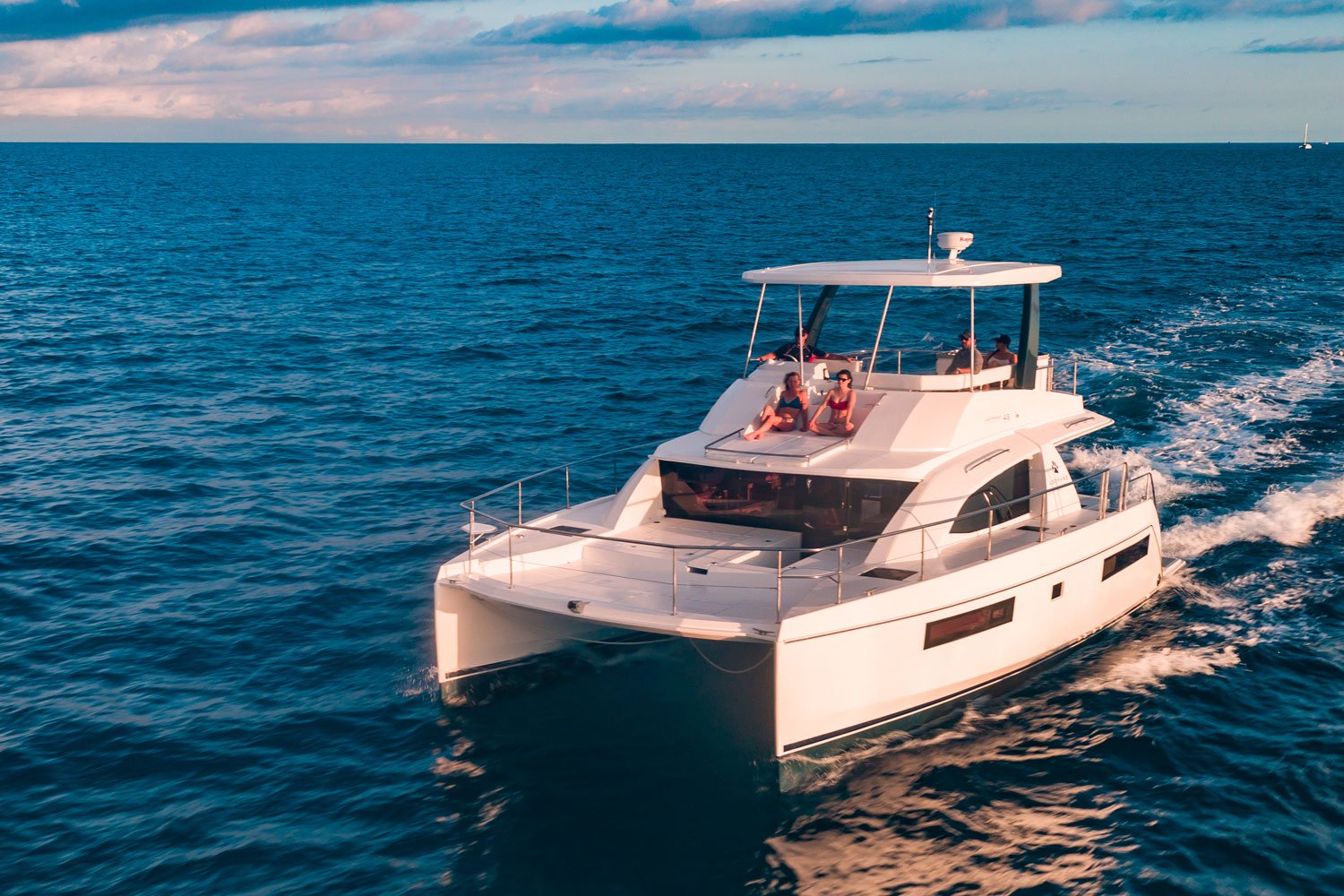
If you want to learn more about the Leopard 51PC, you have come to the right place. The crown jewel of our powercat fleet brings with her innovative features that are sure to impress!
Before you keep reading be sure to check out the models that led up to the Leopard 51PC .
Did you know that while sailing catamarans (in their modern form) have been around for about 50 years, power catamarans did not enter the scene until the mid-90s? Naval architects and Leopard Catamaran designers, Simonis Voogd Yacht Design, stepped into the powercat game in 1997 and took it upon themselves to create the perfect hull configuration. What makes the perfect hull configuration on a powercat? They decided on a list of the following attributes:
- Low resistance through a large speed range,
- Good sea keeping abilities,
- Good motion behavior in a seaway,
- The ability to maintain performance through a large range of displacements.
Our designers were able to produce these qualities in the design of the Leopard 51PC. How were they able to manage this? Designer Alexander Simons explains that this was accomplished through eight months of extensive studying and testing with NUMECA, the current market leader in the industry for CFD which stands for “Computational Fluid Dynamics” (sometimes called Virtual Tank Testing). NUMECA’s testing programs have been used by Oracle Team USA and Emirates New Zealand in the America’s Cup to optimize catamaran design.
It was 15 years of research and design that led us to the Leopard 51PC.
The Leopard 51PC is equipped with efficient Yanmar V8 diesels engines which are smooth and quiet. She also boasts the best fuel economy when comparing mile/ gallon versus speed. And the design of the propeller tunnel provides a dynamic lift under the stern.
Entertain your friends and family on the expansive flybridge, which is the heart and soul of this yacht. It includes a hard top, ample seating, a sunbathing platform and a standard wet bar with options for a fridge, icemaker and grill.
Technical Specifications:
Cruising Speed: 17.4 knots
Top Speed: 25 knots
Draft: 3 ft. 2.6 in.
Engine: 2 x 370 hp
Displacement: 40,785 lbs
Cabins/ Heads: 3/3 or 4/4
Beam: 25ft. 1 in.
Want to discover more about the Leopard 51PC from the designer himself, including the performance of this yacht versus the competition? Click the button below and fill out our form to receive a technical document written by Alexander Simonis to your inbox instantly!

-Alexander Simonis, Simonis Voogd Yacht Desgin
Download the Document
Topics: Product Details , Leopard 51 PC

Katie Campbell
Subscribe here.
- ACHIEVEMENTS
- MANUFACTURING
SAILING RANGE
Power range, introducing the, leopard 50 catamaran, the next generation of leopard catamarans.
Designed as a versatile replacement for the award-winning Leopard 48 (Boat of the Year 2012), the new Leopard 50 is an exciting new cruising sailing catamaran taking the best of Leopard Catamarans’ previous features yet boasting new innovations and design elements both on the exterior and interior.
With naval architecture by Simonis & Voogd Yacht Design, and with exterior and a fresh new look on the interior design by the world-class design team at Robertson and Caine, the Leopard 50 proudly ushers in the next generation of Leopard Catamarans’ style and functionality.

29+ Years of Production Expertise
While the exterior of the yacht has been enhanced, Naval Architect for Simonis Voogd Design, Alexander Simonis, tells us this:
“Most of the work has been done ‘under the bonnet’ so to say by advances made in the construction geometry of the new 50. To create the beautiful open plan layouts and the nearly 360-degree view from the saloon area while at the same time have a strong and stiff yacht which is not too heavy requires advanced engineering solutions.
The new Leopard 50 makes use of carbon-infused ring frames in the most critical areas to achieve this. This type of construction has been pioneered on the larger all carbon racing catamarans and is now successfully being applied in this Leopard cruising catamaran so that we can offer the best possible mix between comfort, space and performance.”
The perfect blend of comfort and style.
“Stepping onboard the L50 will reveal an interior that is contemporary in style, with a focus that blends aesthetic detail with functionality.
Cabins are more open and spacious than ever before thanks to widening bulkhead openings as much as possible. This is achieved by combining exotic materials with new modern construction techniques.
One can appreciate the sense of ease and comfort while moving throughout the boat. This is a product of our team’s passionate approach stemming from initial sketches, to detailed 3D models, and finally life-size replicas of each area where we physically and meticulously tweaked every single feature until we were 100% satisfied that we had the best product available.”
- Michael Robertson, Tampa Design Team

The innovative flybridge on the Leopard 50 includes a lounge area, a sunbed and shade awning. Access to the flybridge is provided by floating stairs leading up from the aft cockpit. While under sail, passengers can move about the flybridge with ample headroom and never worry about interference from the boom.
The next generation of
LEOPARD CATAMARANS
She incorporates a heritage of Leopards spanning twenty five years of production expertise.

| 15.4 m | 50 ft 6 in | |
| 14.9 m | 48 ft 11 in | |
| 8.04 m | 26 ft 5 in | |
| 1.61 m | 5 ft 3 in | |
| 23.51 m | 77 ft 2 in | |
| 1.01 m | 3 ft 4 in |
Engine Specifications
| 2x 57 hp Yanmar Diesel | |
| 4 | |
| 920 L / 243 gal | |
| 3‐blade: 460 x 356 mm / 18 in x 14 in |
Sail Specifications
| 90.3 sqm | 972 sqft | |
| 95.5 sqm | 1028 sqft | |
| 63.9 sqm | 688 sqft | |
| 90.1 sqm | 970 sqft | |
| 154.2 sqm | 1660 sqft |
Load Specifications
| 700 L | 185 gal | |
| 20600 kg | 45415 lbs | |
| 5400 kg | 11905 lbs | |
| 170 L | 45 gal |
- 3 Cabin + Utility Cabin Layout
- 4 Cabin Layout
- 5 Cabin Layout

Visit our Popular Forums
- Monohull Sailboats
- Multihull Sailboats
- Powered Boats
- General Sailing
- Antares Yachts
- Fountaine Pajot
- Lagoon Catamarans
Cruising Business
- Boat Classifieds
- General Classifieds
- Crew Positions
- Commercial Posts
- Vendor Spotlight
Life Aboard a Boat
- Provisioning: Food & Drink
- Families, Kids, & Pets Afloat
- Recreation, Entertainment, & Fun
- Boat Ownership & Making a Living
- Liveaboard's Forum
Seamanship, Navigation & Boat Handling
- Seamanship & Boat Handling
- Training, Licensing, & Certification
- Health, Safety, & Related Gear
- Rules of the Road, Regulations, & Red Tape
Engineering & Systems
- Const. / Maint. / Refit
- Product / Service Reviews
- Electronics: Comms / AV
- Electrical: Batts / Gen / Solar
- Lithium Power Systems
- Engines & Propulsion
- Propellers & Drive Systems
- Plumbing / Fixtures
- Deck Hdw: Rigging / Sails
- Aux. Equipment & Dinghy
- Anchoring & Mooring
Photo Categories
- Member Galleries
- Life Onboard
- Sailing in the Wind
- Power Boats
- Cruising Destinations
- Maint. & Boat Building
- Marine Life
- Scuba Diving & Divers
- General Photos
Recent Photos

Listing Categories
- African Cats
- view more »
- Crew Wanted
- Crew Available
- Enhance Your Account
- Meet the Mods
- Meet the Advisors
- Signup for The Daily Cruiser Email



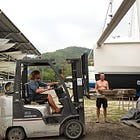
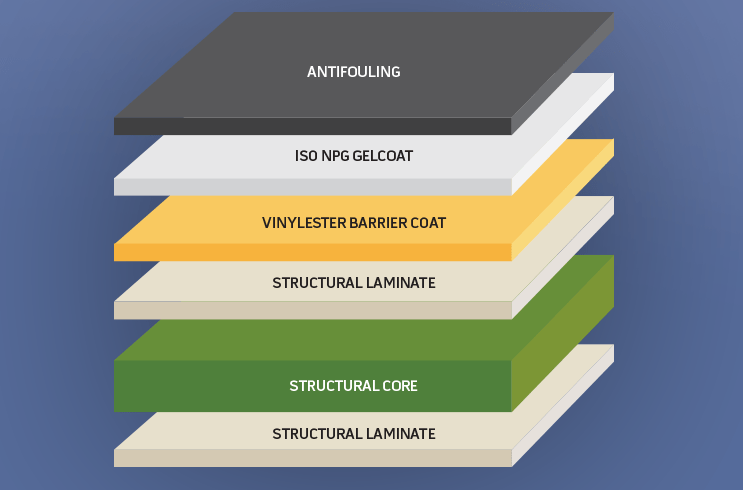
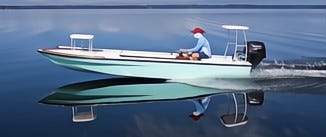
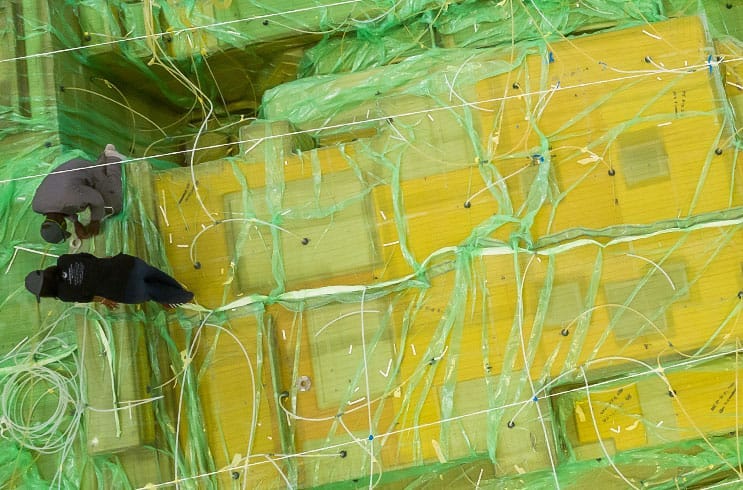
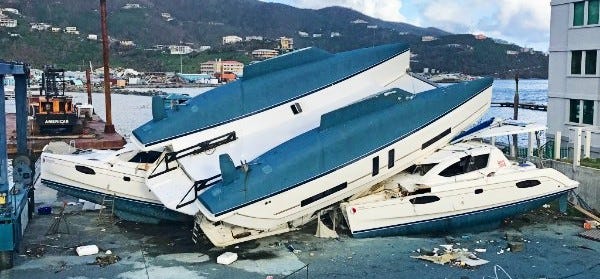
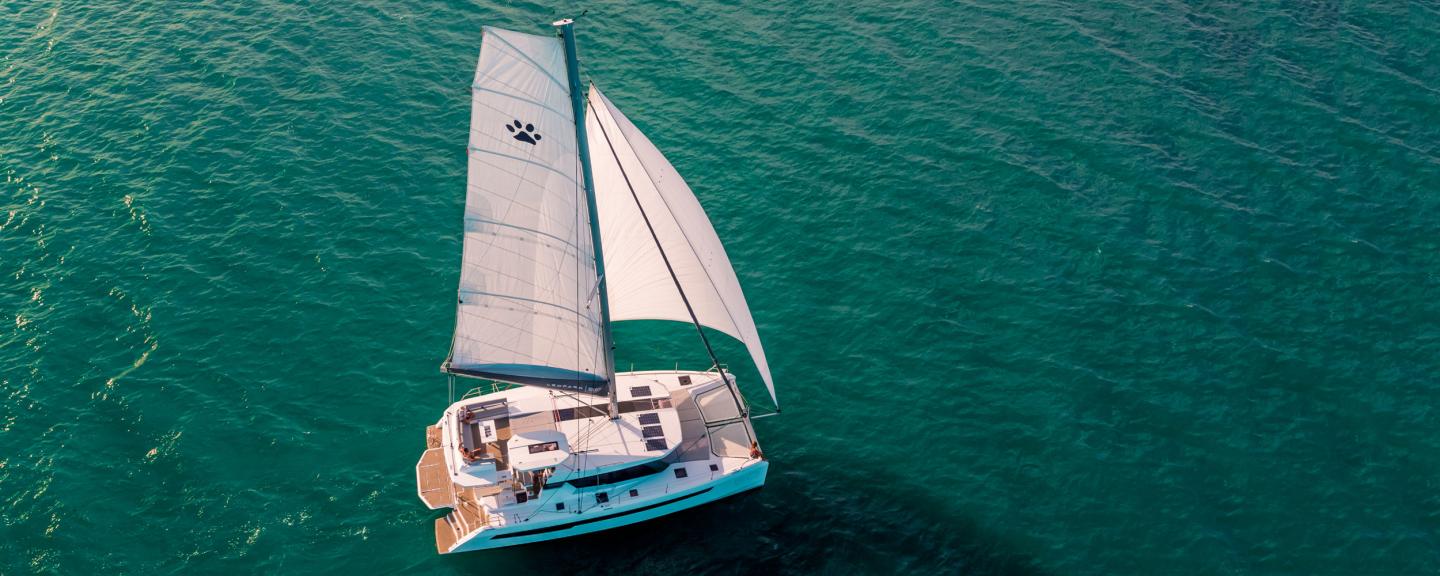


IMAGES
VIDEO
COMMENTS
The Leopard 51PC replaced the Leopard 47PC and includes a multitude of exciting features such as a forward cockpit. Skyrocketing Growth. In early 2012 the 1,000th Leopard Catamaran was launched, further establishing Robertson and Caine's position in the catamaran market. Today, more than 2500 Leopard cats have been delivered around the globe.
leopard. In 1991, John Robertson and Jerry Caine started a boatyard at Woodstock in the suburbs of Cape Town, in South Africa. Leopard Catamarans were born from the charter market: Robertson & Cain was briefed to design and build specially designed yachts for The Moorings: a global charter company. 6 years later, the company branched out into ...
The Leopard Identity. Leopard Catamarans pushes the boundaries of catamaran design. Evolving from 50 years of customer feedback, Leopard Catamarans has pooled their expertise with builders Robertson and Caine to design today's Leopard range: spacious, robust, performance-driven blue water cruising catamarans. As the worldwide distributor, we ...
Building Excellence: A Catamaran Production Tour at Robertson and Caine. 19 May, 2023. The opportunity to visit the place where the world's best sailing and power catamarans are produced was the experience of a lifetime. I found myself immersed in the extraordinary exploration of the hidden artistry behind building a catamaran—a journey that ...
The Leopard 44 results from another successful collaboration with American catamaran designers Morrelli & Melvin. The goal was a solid, affordable mid-sized catamaran capable of blue water sailing and good for the charter market. Multiple awards and the boat's enduring popularity show how well they hit the target.
(Leopard Catamarans and The Moorings are part of the same ownership group.) The new Leopard 53 Powercat made its world debut at the Miami International Boat Show. Built by Robertson & Caine in Cape Town, South Africa, the Leopard 53 PC replaces the 51 PC, touted by the company as "the best-selling powercat of all time in its size range."
Overall joinery quality and workmanship is excellent. Under Sail. While you'd never mistake the Leopard 48 for a racing cat, the boat still provides more than enough get-up-and-go for some very fun sailing. In 10 knots of wind, we managed a respectable 8-knots-plus close reaching through a light chop and were able to maintain 6 knots of boat ...
The History of Leopard and The Moorings. In 1994 the world's largest charter company, The Moorings, was looking for a company to build catamarans for their charter fleet. After a successful background of custom and racing yachts, Robertson & Caine of Cape Town, South Africa was chosen by The Moorings to build a rugged catamaran up to the ...
1. The Leopard 51 PC was the first Leopard Powercat designed by Simonis-Voodg Yacht Desgin. 2. The flybridge of the Leopard 51 PC is the largest in its class. 3. The flybridge of the 51 PC can be fully enclosed for maximum comfort. 4. The Leopard 51 PC is highly favored by delivery skippers for comfort and reliability. 5.
The making of a Leopard HISTORY Soon after, the Leopard 37PC was introduced to satisfy demand for a smaller powercat, and in 2011 this model was replaced with the Leopard 39PC. Each and every power cat is also delivered on its own bottom all over the world. In early 2012 the 1,000th Leopard catamaran was launched, further establishing
Leopard 42 Boat Review. The new Leopard 42, is a versatile, family-cruising catamaran. Mick Jagger was not singing about boat tests and wind speeds when he belted out the title lyrics to the classic Rolling Stones tune "You Can't Always Get What You Want.". Far too often during many years of conducting sea trials on new boats—when you ...
A new Leopard 40 power catamaran will cost $769,000 for the basic 2023 model. However, second-hand catamarans are available if you can't afford a new model. A quick search on Yachtworld.com came up with a Leopard 38 from 1999 that is on the market for $198,000. Plus, Leopard Catamarans themselves have a yacht brokerage for their second-hand ...
Leopard 53 Powercat. Power for the Leopard 53 Powercat comes from a pair of 370-hp Yanmar diesels that reportedly are good for just under 25 knots maximum speed, and an economical cruise at 17.5 knots. Cruising with one engine, range jumps to nearly 2,000 nautical miles at just shy of 7 knots, according to the builder.
DESIGN AND COLOR. One of the reasons we LOVE and chose the 2015 Leopard 44 year is that it was the first year of only two years (2015 & 2016) out of seven years total that the Leopard 44 was made which incorporates the new modern sophisticated, yet casual light gray aged driftwood interior which is now standard on all Leopard catamarans which ...
Sailboat specifications. Last update: 24th February 2020. The Leopard 58 is a 57'7" (17.56m) cruising catamaran designed by Simonis Voogd Design (Netherlands). She is built since 2011 by Robertson and Caine (South Africa). The Leopard 58 has also been marketed as Moorings 5800.
Leopard 40 Review and Common Problems. Leopard began their sailing catamaran line-up with a cruise-worthy 45-foot catamaran. When the charter industry took notice, they requested smaller sailing cats for their fleets, so Leopard provided the 38-foot model, as well as a 42-foot model. In 2004, Leopard partnered with designers Morelli & Melvin ...
The Leopard Catamarans Identity Spacious and robust cruising catamarans with superior performance. Evolving from 50 years of customer feedback, Leopard Catamarans has pooled their expertise with builders Robertson and Caine and Naval Architects Simonis Voogd to design today's Leopard range: spacious, robust, performance-driven blue water cruising catamarans.
It includes a hard top, ample seating, a sunbathing platform and a standard wet bar with options for a fridge, icemaker and grill. Technical Specifications: Cruising Speed: 17.4 knots. Top Speed: 25 knots. Draft: 3 ft. 2.6 in. Engine: 2 x 370 hp. Displacement: 40,785 lbs. Cabins/ Heads: 3/3 or 4/4. Beam: 25ft. 1 in.
The new Leopard 50 makes use of carbon-infused ring frames in the most critical areas to achieve this. This type of construction has been pioneered on the larger all carbon racing catamarans and is now successfully being applied in this Leopard cruising catamaran so that we can offer the best possible mix between comfort, space and performance.".
Registered User. Join Date: Mar 2015. Location: Currently cruising in SE Asia. Boat: Catana 47 hull no 1 ex Leopard 40 (2009) & Crownline 250CR. Posts: 383. Re: The History Of Leopard Catamarans. The Leopard forum has many details. The 39 and 40 was a crossover period in late 2009/2010.
Find Sail Leopard Catamaran boats for sale in your area & across the world on YachtWorld. Offering the best selection of Leopard boats to choose from.
Leopard 42. Built by Robertson & Caine and designed by naval architects Simonis Voogd, the Leopard 42 utilizes superior finishes and materials, creating a one-of-a-kind vessel that balances comfort, performance and ease of handling. A thoughtful design process ensures every feature and function has been anticipated, with minimal customization ...
Last week, Loose Cannon reported on a horrific warranty claim involving a Leopard 45 sailing cat and her despondent owners who had hoped to launch a YouTube sailing channel but ended up living in repair yards for more than two years—and still are. Instead of aspirational videos of life cruising aboard Liger, three Australian friends ended up documenting the multiple defects and repair efforts.
Leopard 50. Designed to replace one of the best-selling Leopard Catamarans of all time, the Leopard 50 is the reincarnation of the award-winning Leopard 48. With no detail overlooked, the Leopard 50 embodies luxury sailing at its very best. Sea trialed and tested off the coast of South Africa, its performance, comfort and handling are a ...